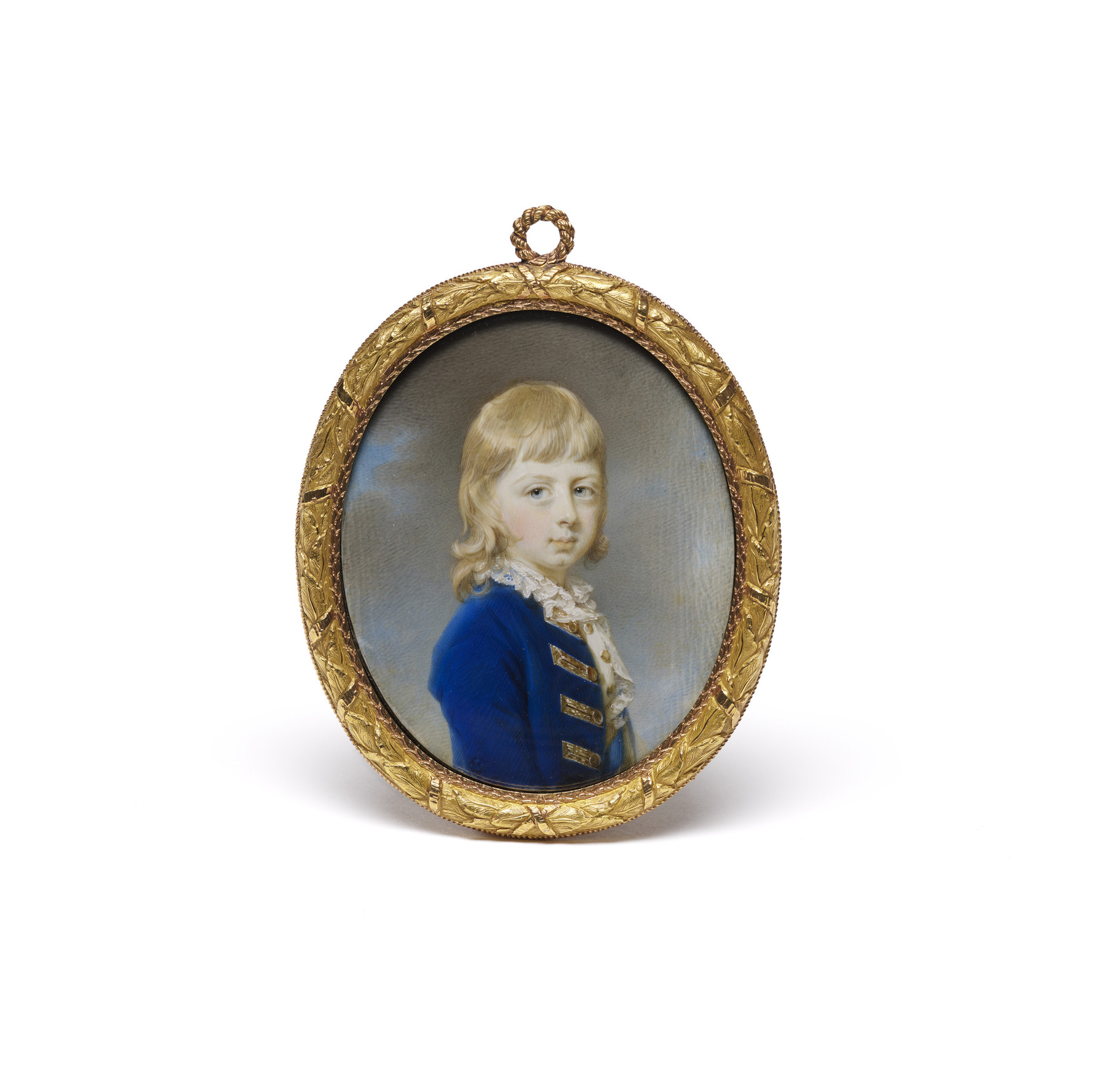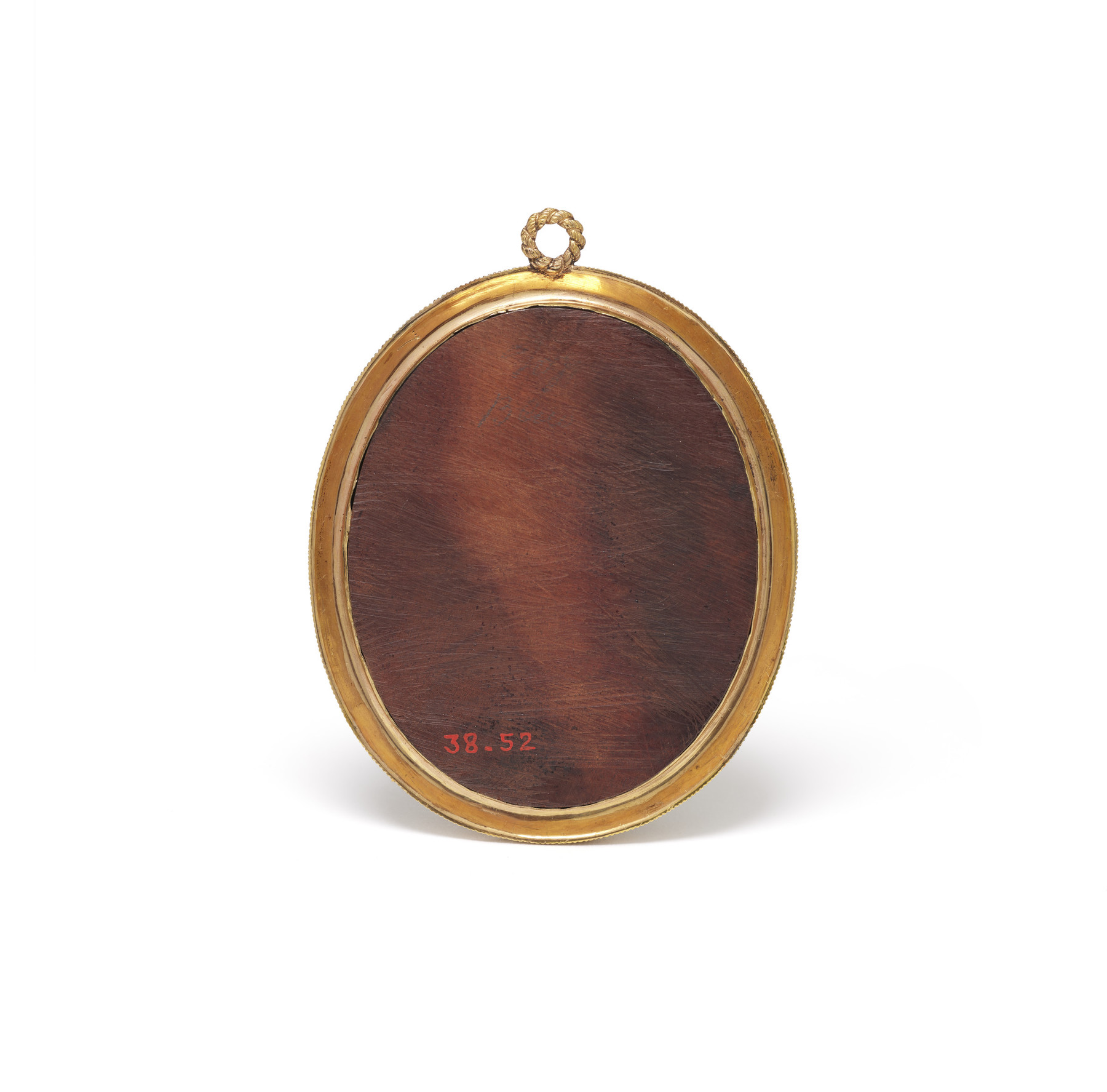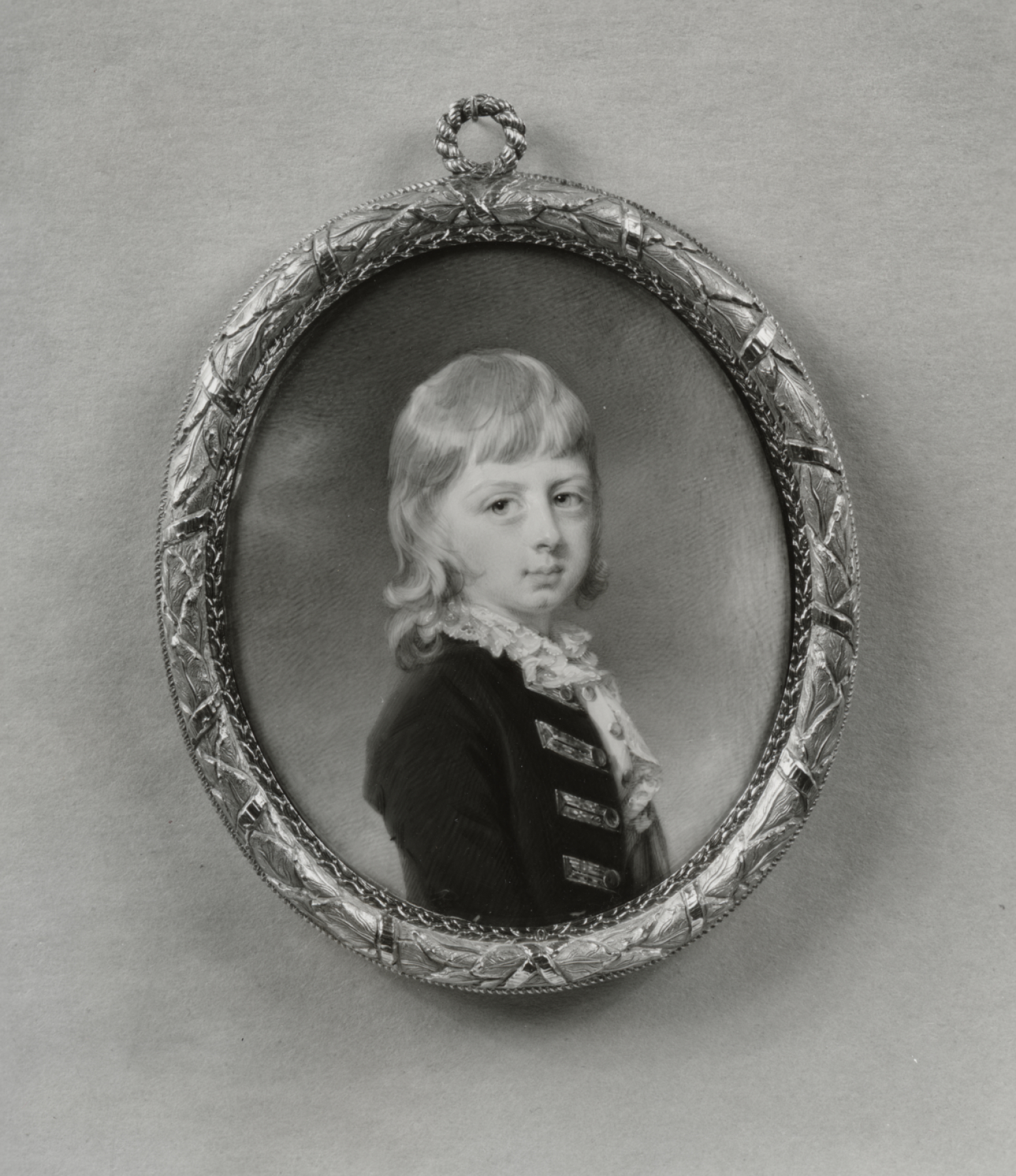Portrait of Frederick, Prince-Bishop of Osnabruck, afterwards Duke of York (1763-1827)
(18th and 19th Centuries )
At the age of 14, the German-born Meyer was taken to London, where he studied with Christian F. Zincke, a specialist in painting in enamel on copper. In 1764, he became painter in miniature to Queen Charlotte and painter in enamel to King George III.
Frederick was the second eldest child, and second son, of George III. Later in life he was given a high rank in the army, but proved to be an ineffectual commander, inspiring the nursery rhyme "The grand old Duke of York...". The Walters Art Museum also holds a portrait miniature by the same artist depicting Frederick's elder brother, George, later George IV (accession number 38.53). The frame is the same as for this miniature.
Provenance
Provenance (from the French provenir, 'to come from/forth') is the chronology of the ownership, custody, or location of a historical object. Learn more about provenance at the Walters.
Earl of Chicester; Henry Walters, Baltimore, before 1901 [mode of acquisition unknown]; Walters Art Museum, 1931, by bequest.
Exhibitions
| 2008-2009 | Portraits Re-Examined: Dawoud Bey Project. The Walters Art Museum, Baltimore. |
Geographies
United Kingdom, England, London (Place of Origin)
Measurements
H: 2 7/8 in. (7.3 cm)
Credit Line
Acquired by Henry Walters, before 1901
Location in Museum
Not on view
Accession Number
In libraries, galleries, museums, and archives, an accession number is a unique identifier assigned to each object in the collection.
In libraries, galleries, museums, and archives, an accession number is a unique identifier assigned to each object in the collection.
38.52






